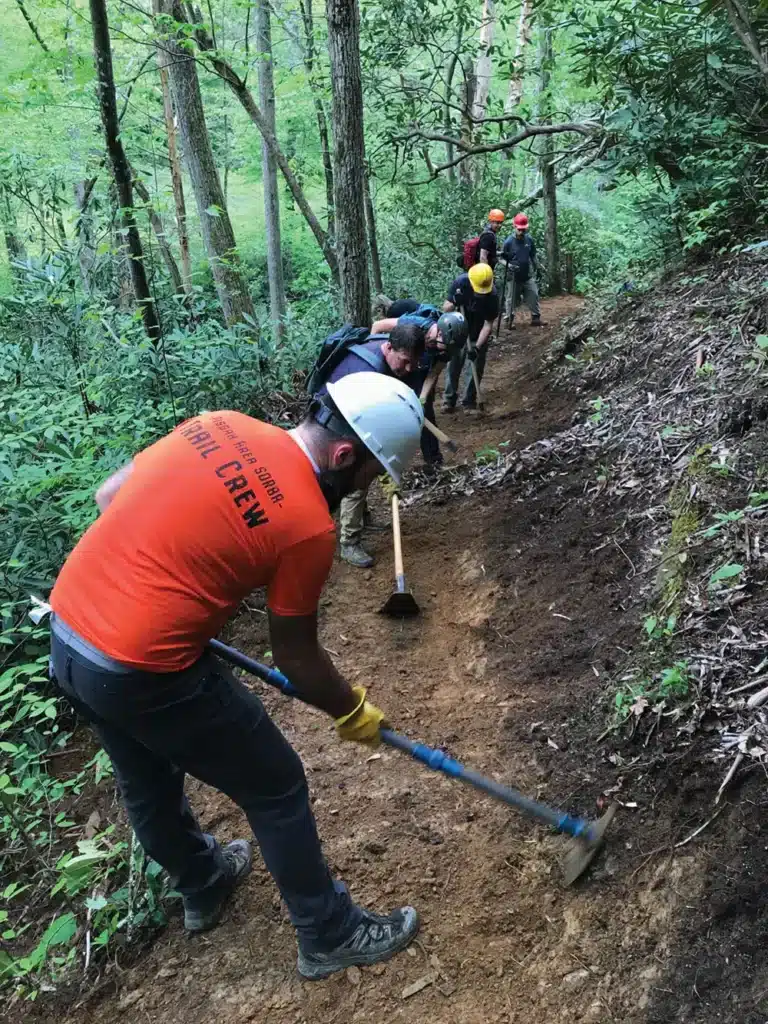Why is such a bountiful region struggling to get healthy food onto dinner tables?
On the outskirts of Staunton, Va., sits a little red brick building with a screen door and whitewash shutters. It doesn’t look like much on the outside, but what happens inside the aptly named restaurant The Shack is emblematic of a movement that is much larger than its 400-square-foot space.
“Do I cook Appalachian food? Well, I cook food of the region inspired by the region with ingredients from the region, so sure, I’m an Appalachian chef. Why not?” says The Shack’s owner and chef Ian Boden.
His hesitancy to associate with the label “Appalachian” might come across as crass were it not for the fact that The Shack is a tribute to Boden’s wife’s Grandma Tissy, who raised her children in a humble cabin nearby. The Shack’s logo is an artistic rendering of Grandma Tissy’s home. Inside the restaurant, framed black and white photos of the family’s history adorn the walls.
“She was the epitome of Appalachian hospitality,” says Boden. “She raised the neighborhood even though she had no money. She gardened, she canned, she bartered, she did whatever she had to do to get by and feed her family.”
It’s that sense of good-natured, open door geniality that Boden was yearning for after spending nearly a decade in New York’s exclusive restaurant scene. His own Russian-Hungarian-Jewish upbringing in northern Virginia, which at the time was largely farmland, fostered a strong sense of place that he hardly realized was important to him until he ate at restaurants that missed the mark.
“It felt forced,” he says of eating at a barbeque restaurant in New York. “It felt like a hoax,” not because of the ingredients or techniques the restaurant used, says Boden. “I think it’s a feel.”
So What is Appalachian Food?
The Shack was listed as runner-up for best new restaurant in Esquire’s inaugural American Food and Drink Awards in 2014 and ranked as one of Southern Living’s Best Restaurants in the South. Boden’s locally sourced dishes reflect the blend of Appalachian and eastern European influence in his life: chicken and dumplings made with matzo, butterbean hummus without the chickpeas. Despite his tendency to hold labels like “Appalachian” and “farm-to-table” at arm’s length, Appalachian food advocates are rejoicing in the national coverage restaurants like The Shack are receiving for one reason—the region is finally being recognized as the culturally diverse hotbed that it is.
“Appalachian and southern food in general has been pigeonholed into a stereotype, a caricature of itself,” Boden says. “People have simplified what Appalachia is. They’ve tried to boil it down to its essence and what they think the essence of it is is completely off-base.”
No one understands this misperception more than chef Mike Costello. His own Appalachian roots can be traced back to the late 1800s when his great-grandmother moved to Helvetia, W.Va., from Switzerland at the age of 10. For so long, Appalachian culture and cuisine has been depicted as a monoculture, Costello says, and with mainstream media playing into that skewed portrait, he worries that it’s even affecting how Appalachians view themselves.

“Our heritage here in Appalachia is so rich and so diverse. Food is our opportunity to tell a better, more accurate story of Appalachia,” he says. “If you ask someone what are three items they think of when they hear ‘Appalachian food’ they’ll say biscuits and gravy and country ham. What might surprise people about Appalachia is something like an eastern European borscht is just as Appalachian as gravy and Italian sausage is just as Appalachian as country ham. The list goes on and on.”
Through their 170-acre property, Lost Creek Farm, Mike and his wife Amy are giving Appalachia’s food heritage the voice it never had. They forage for wild ramps, plant heirloom crops, pickle and can. Then they take those ingredients, as well as their own family stories, on the road. From The Central Collective in Knoxville to Rising Creek Bakery in Mount Morris, Penn., Mike and Amy’s schedule is packed with pop-up dinners and culinary workshops throughout and beyond Appalachia. Part dining, part storytelling, their message is simple: Appalachian food is defined by sense of place.
“What they eat at the base of New York state, the top of the Appalachian region, is completely different than what they eat in northern Georgia,” adds chef Travis Milton.
Like Costello, Milton’s past is rooted deep in the hills of Appalachia. Originally from Castlewood, Va., Milton decided to return to his hometown to open not just one but three restaurants in Southwest Virginia that pay homage to the food and farm culture on which he was raised. His restaurants feature items like leather britches, sour corn (think sauerkraut, but with corn), and Candy Roaster squash, an heirloom variety native to central Appalachia. Having worked as a chef outside of Appalachia for years, Milton says that when he finally made the decision to head out on his own, he knew his restaurant had to be close to home.
“One of the things I preach is being non-extractive,” Milton says. “If I open an Appalachian restaurant in Richmond, what benefit is the Appalachian region seeing other than the word ‘Appalachian’ appearing in an article in the magazine? I wanted to come back here because foodways can be a part of the economic diversification that needs to happen in Appalachia.”
Reclaiming Sense of Place
What Milton is putting into action is something indicative of Appalachia as a whole: an unabashed sense of pride in place. It’s a fierce, determined pride, subtle, not gloating, and according to Milton and Costello both, if the region could just harness that passion, Appalachians might stand a chance of actually deciding their economic future, as opposed to having an outside industry dictate it for them. The problem, says Costello, has everything to do with the stigma surrounding all things Appalachian.
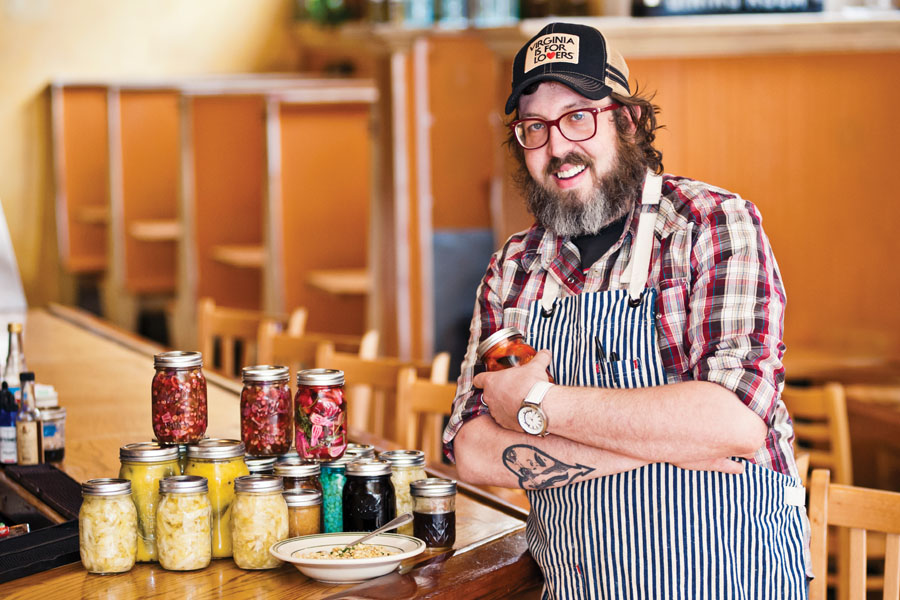
“When I first worked at a restaurant in Charleston, the further away ingredients came from the better,” Costello says. “In a place like West Virginia, ‘local’ was not a symbol of quality. It was frowned upon. We sort of have this tendency to see what we have to offer as not all that special or marketable. We look at other states and see what looks popular and then try to do it here. What we come up with is a much less authentic version.”
Costello likens this phenomenon to opening a beach-themed water park in the mountains—it just doesn’t make sense. As with the region’s musical heritage and outdoor recreational amenities, Costello wants Appalachians, and especially West Virginians, to honor their place-based food heritage and be the ones to share those stories. Otherwise, somebody else will.
“If there’s a chef in Brooklyn who’s decided that he’s going to show off an Appalachian menu with ramps and morels, if he doesn’t know those stories behind those things, it goes from Appalachian food to Brooklyn food that just so happens to have some Appalachian ingredients,” he says. “There is a movement around Appalachian food right now and if we don’t do enough to insert ourselves in the narrative, that’s going to continue to happen and those rich stories about our land, our people, and the traditions connected to that land aren’t going to be told and that’s going to be a real shame for Appalachia.”
Josh Bennett doesn’t need to be told to own his story. A West Virginia native, Bennett is keeping the cider-making traditions of his community alive through Hawk Knob Cidery in Lewisburg, W.Va.
The cidery, which Bennett started with his business partner Will Lewis back in December 2015, is West Virginia’s first cidery. Dry yet approachable, Hawk Knob’s ciders are unique not only in their slight bourbon aftertaste (a result of using oak casks for barrel aging), but in the fact that Bennett uses 100 percent West Virginia heritage variety apples.
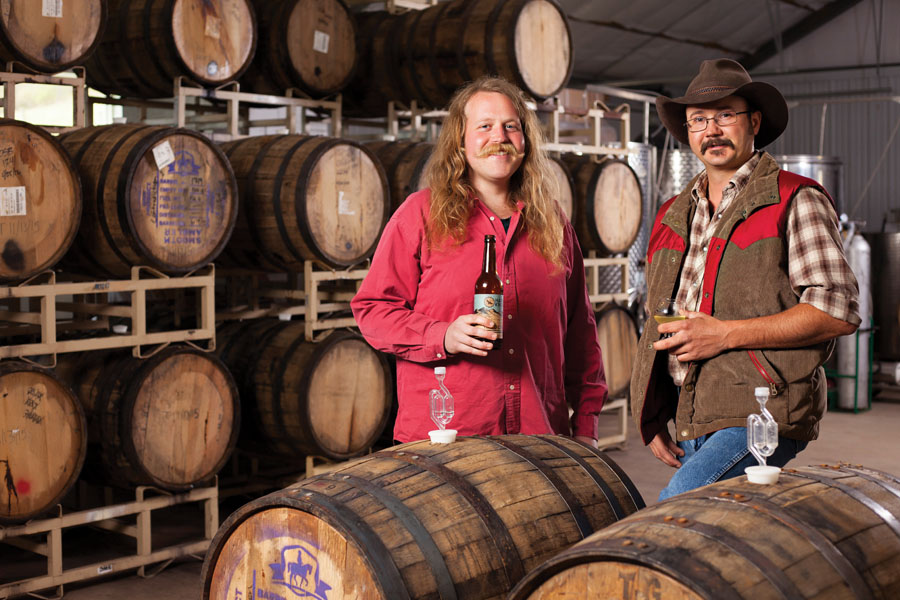
“Financially it’s quite a bit harder to do,” Bennett says of sourcing locally, particularly with heritage varieties. “If I weren’t dedicated to having a truly West Virginian grown product, I could do this a whole lot cheaper. But in the end, it’s not going to be the same kind of product. There’s something to be said for keeping things close to home.”
Local Food on the National Agenda
Business for Hawk Knob has been good. In the first three months of opening, the cidery sold out of product. For Bennett, the challenge isn’t so much getting West Virginians to drink his cider—it’s connecting the dots to form a bigger picture that puts West Virginia right up there with its Virginia neighbor as a food and beverage destination unto its own.
“Napa Valley didn’t happen because there were a couple of producers doing their own thing,” Bennett says. “Napa Valley happened because of a conglomeration of growers and the state backing that industry. We have the same potential here. We’ve had to shoulder the weight ourselves of promoting this sort of thing. There’s a lot of room for the state to be involved.”
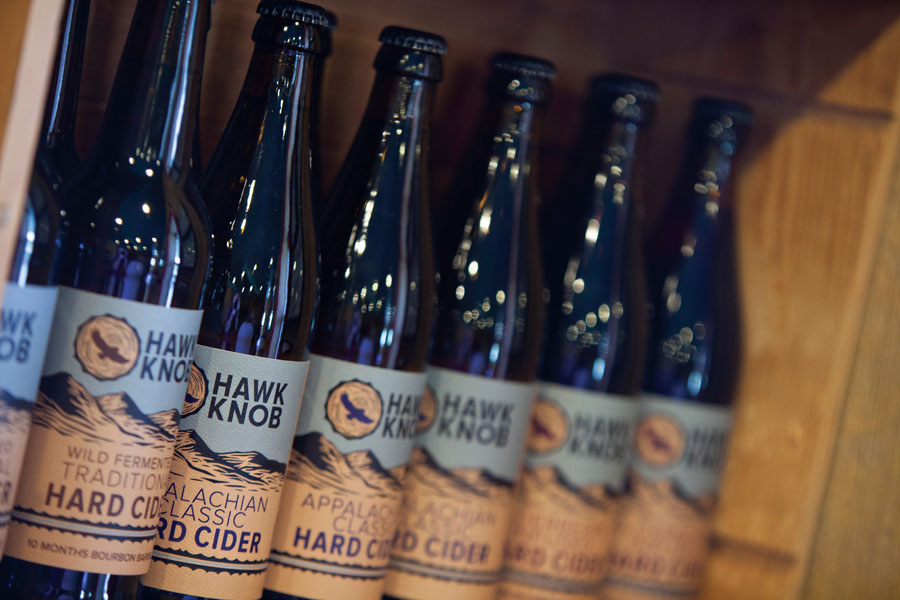
More importantly, argues Burnsville, N.C.,-based author Ronni Lundy, the federal government should be involved, too. Lundy, a Corbin, Ky., native, has spent the better part of her career immersing herself in Appalachian culture. Her recently released book, Victuals (pronounced, “vidls”), explores Appalachian food traditions across the region. In eight years of research for Victuals, Lundy says she was heartened to see the regional food movement’s scope thus far, but fears the change in political agenda may be a detriment to that energy.
[nextpage title=”Read on”]
“What we have right now is a moment. People are interested in the food and the stories we’re telling about that food, but we’re scrambling as fast as we can to figure out how to make it economically feasible for us,” says Lundy. “If we could get just a little bit of help in the right places, we could do just fine, but I’m afraid we’re again going to become a colony for an extractive industry.”
The federal government’s change in priorities is proving especially worrisome given that federal grants from the Obama-era POWER Initiative are already in play in Appalachia’s coalfields. Some of that money created small-scale agriculture programs, like Refresh Appalachia. But those funds aren’t endless, and many are concerned about the future of initiatives that support agriculture. As central Appalachia in particular seeks other means of economic diversification while battling ongoing health crises like obesity and food deserts, these programs are desperately needed.
Local Food Access in Appalachia: Challenges and Solutions
For some communities, simply finding local produce is hard enough, let alone affording a “farm-to-table” meal. In central Appalachia, where poverty rates are high, car ownership is low, and distances to grocery stores can be over 10 miles, people are especially at risk of losing access to fresh fruits and vegetables altogether. In West Virginia and North Carolina, for example, four out of five counties are considered food deserts. That number is increasing by the day as Wal-marts force mom-and-pop grocery stores out of business and then, as in the most recent case of McDowell County, W.Va., Wal-marts begin shutting their doors, too.
There’s another underlying issue that is essential to understanding the current state of Appalachia. As a whole, the region is losing population at an alarming rate. In McDowell County, population dropped 2.2 percent in 2015, bringing its overall population below 20,000 for the first time since the 1900 census.
“My generation, we were encouraged to go away if you were smart, if you were talented, if you were good in some field,” says Lundy, now in her late 60s. “You were encouraged to get your education somewhere else and establish your life somewhere else.”
That’s exactly what many of Appalachia’s younger generations have been doing for decades. Factor in the former coal miners leaving the region in search of work, and it’s no wonder McDowell County’s Wal-mart decided it wasn’t economically viable to stay open.
Refresh Appalachia is hoping to address some of those problems. The program, an arm of the Coalfield Development Corporation, targets disadvantaged young people ages 18-25 and those that have lost coal jobs. In addition to providing small-scale farming experience and an Associate’s degree, Refresh Appalachia pays its participants above minimum wage for the nearly three-year duration of the program. That’s a drop in the bucket for former coal miners used to a $60,000 salary, but it’s an income nonetheless.
“People who used to work in mining are going to be taking a huge pay cut if they stay in the region, no matter what they do,” says Refresh Appalachia Program Director Savanna Lyons. “We want to give them all the tools they can to help them figure out this transition.”
Programs like Refresh Appalachia are also helping tackle a much larger issue: the disparity between low-income families living in food deserts and farmers trying to make a living. Food labeled “local” is often associated with higher price tags, and rightfully so. It is more expensive to grow on and buy from a small-scale farm. Refresh Appalachia delivers its produce to communities where food access is limited and offers scheduled sliding scale pricing, but the struggle to implement accessibility region-wide is not going to be an easy obstacle to overcome.
In Knoxville, Tenn., that access to fresh produce is very much a challenge. Despite the fact that Knox County has a farmers’ market nearly every day of the week, year-round, and that many of those markets accept EBT and SNAP doubling, the county alone has 20 food deserts. According to Nourish Knoxville’s Executive Director Charlotte Tolley, part of the problem is that farmers’ markets feel too trendy, which alienates the people who could benefit from them the most.
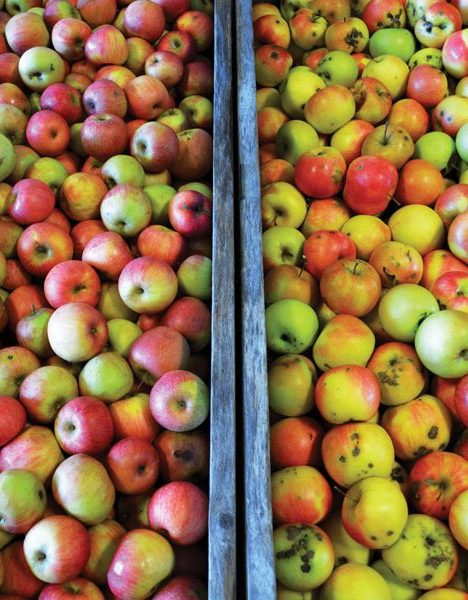
“East Knoxville is considered a food desert and that is one of the communities that feels like downtown is not ‘for them,’” says Tolley. “There’s some urban planning I would blame for that. The James White Parkway is a huge road that visually divides East Knoxville from downtown. It feels much more difficult to walk to, but we want to let people know that the farmers’ market and downtown is for everyone.”
“Crummy food is subsidized and far more available and cheaper to people who have issues with money, and many of us in Appalachia have issues with money,” adds Lundy. “We don’t want to gentrify food to such an extent that we make it impossible for the people who have worked so hard to continue to live here to be able to eat.”
Appalachia’s Future Returns to Its Roots
A 2016 economic report conducted by the University of Kentucky showed that the state ranks 11th in the country for CSA farms. In West Virginia, restaurants and lodging facilities have increased their purchase of local food by 360 percent. Restaurants in North Carolina like Rosetta’s Kitchen in Asheville and F.A.R.M. Cafe in Boone are offering sliding scale meals and work-for-payment plans to help increase accessibility to local foods.
Studies also show that staying local and living sustainably are of increasing importance to the millennial generation. Just ask Lars Prillaman, 33, of Shepherdstown, W.Va. Prillaman and his girlfriend Leslie own and operate Green Gate Farm where they grow vegetables, raise animals, and operate almost entirely on horsepower. Literally.
Prillaman owns two Percheron draft mares, May and Tulip. Together, the two-horse team weighs in around 3,600 pounds. With their combined strength, the horses can take care of everything a tractor would normally do, from mowing to tilling.
That’s all part of Prillaman’s plan to not only have a sustainable farm but to also reduce dependency on fossil fuels. Running a farm hasn’t been an easy, or extremely profitable, endeavor—after four years of operation, Prillaman says they finally turned a profit just last year. But he’s not in it for the money. It’s a lifestyle choice.
“Things go wrong inherently in this line of work,” says Prillaman. “If you’re wanting a career that rakes in the dough, and you think organic agriculture is the next hot thing, forget it.”
Prillaman is one of many in Appalachia going back to the region’s roots, and not because it’s the trendy thing to do. Chef Mike Costello and his wife Amy inherited Lost Creek Farm, where Amy’s grandparents settled in the mid-1800s. Unlike Prillaman, Costello isn’t a full-time farmer yet. He and his wife both maintain part-time gigs to help supplement their lifestyle. But he says preserving the heritage and history of not just their farm but the region at large is something he is deeply committed to.
“We wanted to operate a business that was very much based on sense of place and the heritage that’s connected to that place,” says Costello. “The marketability of food is all about the story that’s attached to the food, and that’s what’s really giving us in Appalachia the opportunity we have today.”
For Mountain State Trout owner Thomas Wimer, upholding his family’s history is precisely the reason he bought back the family hatchery two years ago. Nestled in the hills of Franklin, W.Va., the hatchery was first built in 1953 by Wimer’s great grandfather. In 1990, he sold it out of the family, but Wimer was determined to buy it back and carry on the tradition.
“I’ve been around all over the country and I love it here. I knew this is where I wanted to be and this is what I wanted to do.”
His trout have some of the cleanest, purest water in the region thanks to a spring that surfaces on the property from an underground cave. Wimer charges about $6.50 per pound for his frozen trout, which is cheaper even than the fish you’d find at Kroger.
“My ancestors lived off the land, and I think there are a lot of people in our age group getting back to that idea because it makes sense. It’s what’s good.”
Appalachia has long been painted as a region where dependency on outsiders is systemic, but that’s not been Wimer’s experience. Nor Costello’s or Milton’s. By and large, the backbone of their Appalachia has been a uniquely creative sense of resilience and community-mindedness.
“It’s hard as outsiders to visualize just how hard of a time this is in Appalachia,” says Refresh Appalachia’s Savanna Lyons, “but it’s not just a story about victims. It’s a story about people who have persevered in the region and have been through a lot of hard times. All of that tenacity is still here. These are truly resilient people.”
The road ahead will be filled with no shortage of bumps and dead-ends. Restrictions on cottage industry food processing and an increasingly heated political and environmental climate mean farm and food advocates have their work cut out for them in the years to come. But there’s probably no other segment of America more accustomed to hard work than the people of Appalachia.
“Hopefully we can come to more consensus in our communities and not have this great division,” says author Ronni Lundy. “If we can’t do it over food, we can’t do it over anything.”


